Comfortable 3D Interaction
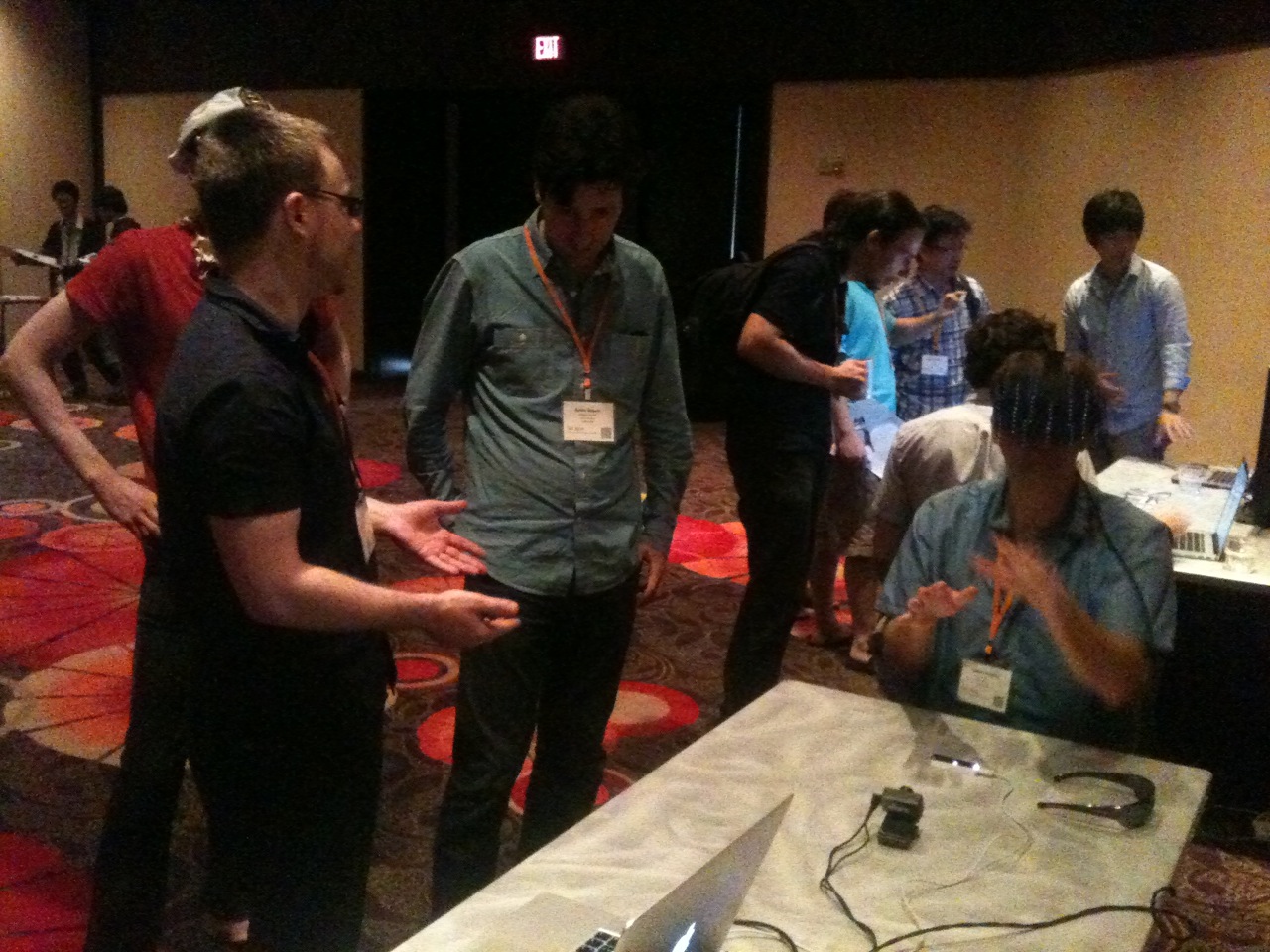
Demo of a Quadmanual User Interface during the ACM SUI 2014
Summary
The advent of affordable fully immersive head-mounted displays (HMDs) renewed the interest in virtual environments (VEs). While fully immersive virtual environments offer a wide range of possibilities, so far, the research focused mainly on interaction performance, i.e. finding the best way for users to efficiently select and manipulate 3D content.
While, generally, the consensus is that free mid-air interaction with virtual worlds with high raised arms isn't desirable, neither for fully, nor half immersive environments, the user's comfort was properly investigated.
Hence our reseach focuses on the effect comfort has on interaction with virtual environments, be it mid-air or touch based input. The goal is to advance our understanding of how future workspaces employing VEs have to be set up to allow efficient work for prolonged timespans.
Research
We investigate the influence of comfort in 3DUIs by utilizing well-known methods from the field. So far, we analyzed direct selection in 3DUIs by conducting an experiment comparing the different interaction regions within a user's interaction space. In this Fitts' Law experiment we found out that the target position relative to the user's eye is a determinant factor for selection performance.

Perceptually inspired ellipsoid selection shape
Besides the perceptually inspired experiments, we conducted studies focusing on the user's subjective comfort level. We found a significant influence of comfort on the user's selection performance. The comfort was subjectively measured.
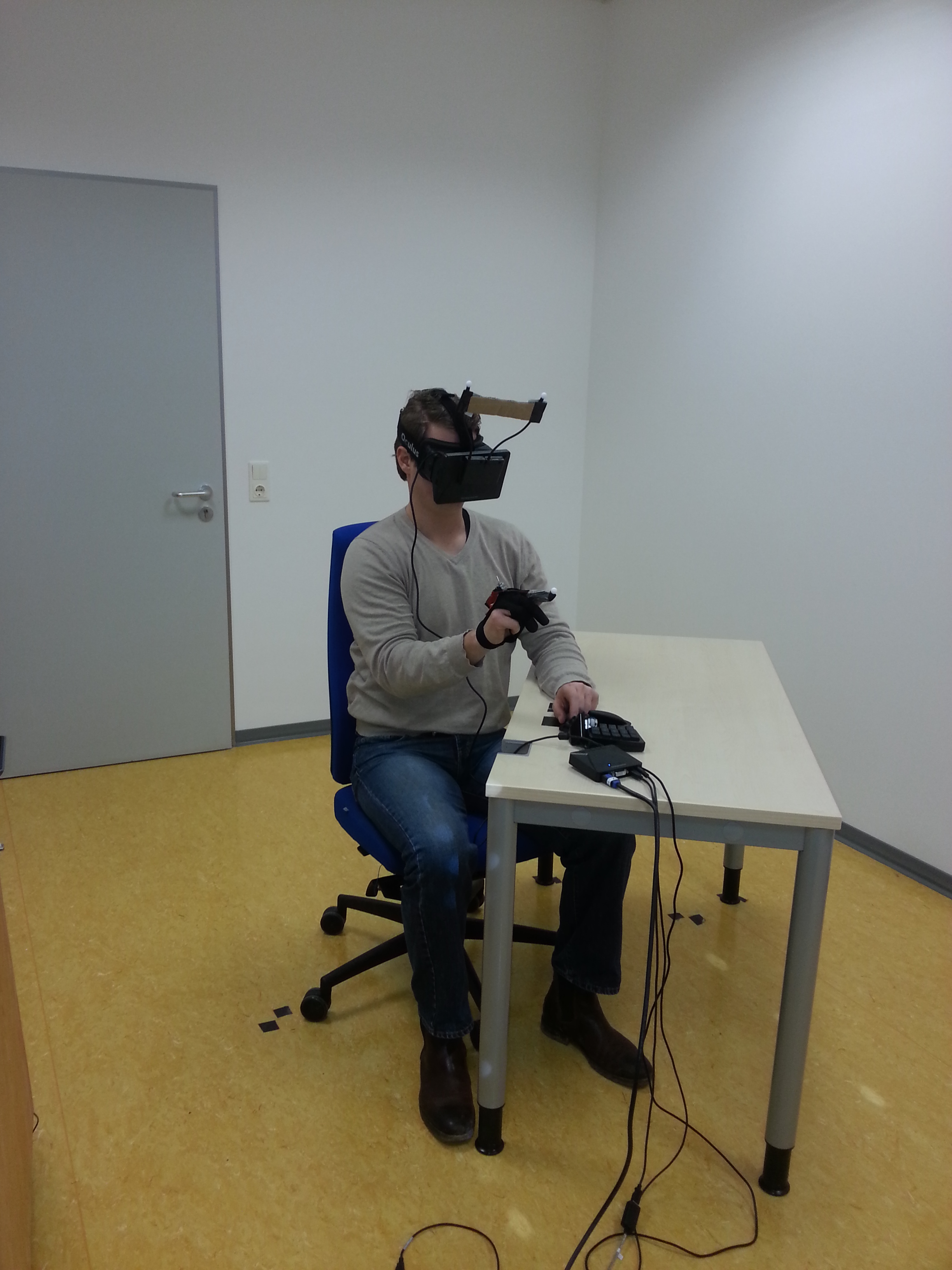
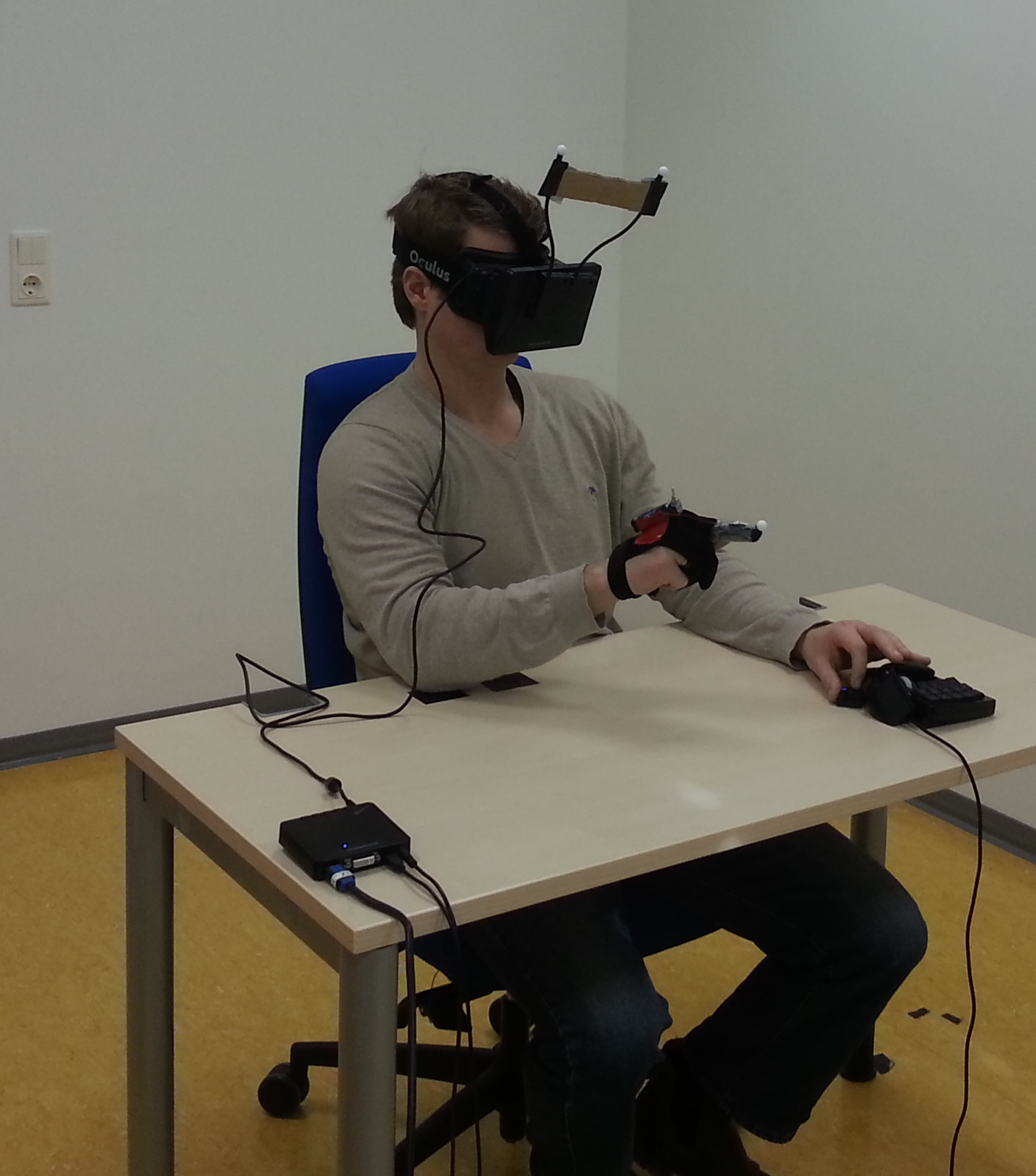
Illustration of a participant during a study comparing comfortable (left) and uncomfortable (right) interaction
Since we know, comfort is important, we investigate new and innovative interaction techniques to improve the comfort of 3DUIs. The latest example is a Quadmanual user interface, which allows the control of four or more hands to reduce the comfortable interaction volume.
![]()
A participant during a perceptual experiment
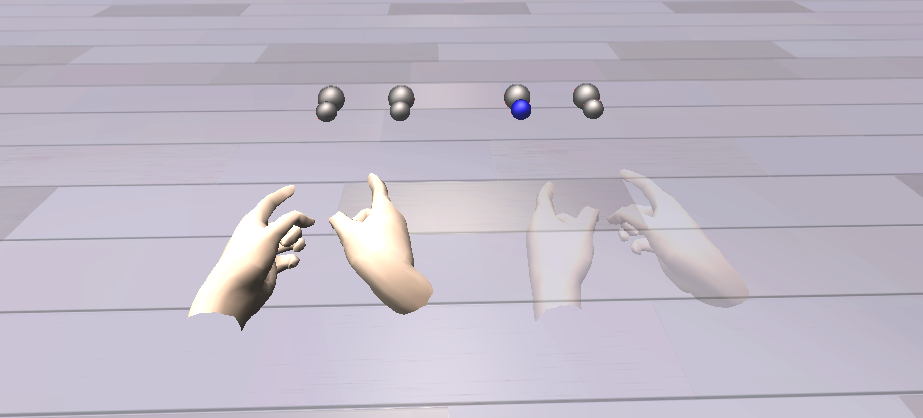
Illustration of a Quadmanual User Interface from the user's perspective

Illustration of a Quadmanual User Interface from the user's perspective
The design of spatial user interfaces or 3D user interfaces (3DUI) is a complicated task, as missing haptic feedback and spatial misperception, as well as various ergonomic factors introduce problems which do not exist in a 2D case. During the work on the Comfortable 3D Interaction project, we investigate new and innovative interaction techniques to improve the comfort of 3DUIs. The latest example is a Quadmanual user interface, which allows the control of four or more hands to reduce the volume where the user has to move their hands in and also expands the volume where a user can can "directly" touch virtual objects. Everyone know situations where having an extra hand or set of hands would be helpful. Quadmanual user interfaces allow users in virtual environments to have just that, a helping extra hand.
Multimanual Interaction on a 3D Fitt's Law Task
Supervision
Project Team
|
Goal
The goal of our project was to figure out, whether participants would prefer using multiple virtual hands to complete a Fitt's Law task over having just one pair of hands available for use. We were interested to see how the participants value the surplus of mental demand for controlling multiple pairs of hands compared to the loss of physical demand required to finish the task with only one pair of hands.
Approach
We designed a system allowing the user to reach targets further away without having to move the full distance: Multimanual User Interfaces (MUI). To achieve this, we divided the interaction space into multiple smaller sections, in which a virtual hand pair was placed. With different switch methods, the user is able to activate the hands in these sections. In order to not restrict the user's hands usage, these switch methods make use of unused resources like the foot, voice or gaze. In our solution the entire interaction space is reachable, with reduced physical exertion.
|
|
|
|
|
|
Evaluation
For testing how our switch methods performed, we let participants test the methods in each settings. From our analysis we conclude that the best switch method is Line-of-gaze, as it was the fastest overall and was picked as the favored switch method by most of the participants. When asked which switch method the participants would choose for long tasks, no one wanted to use just one hand pair. This indicates, that despite the surplus of mental demand, participants preferred to use Multimanual User Interfaces over Bimanual User Interfaces.

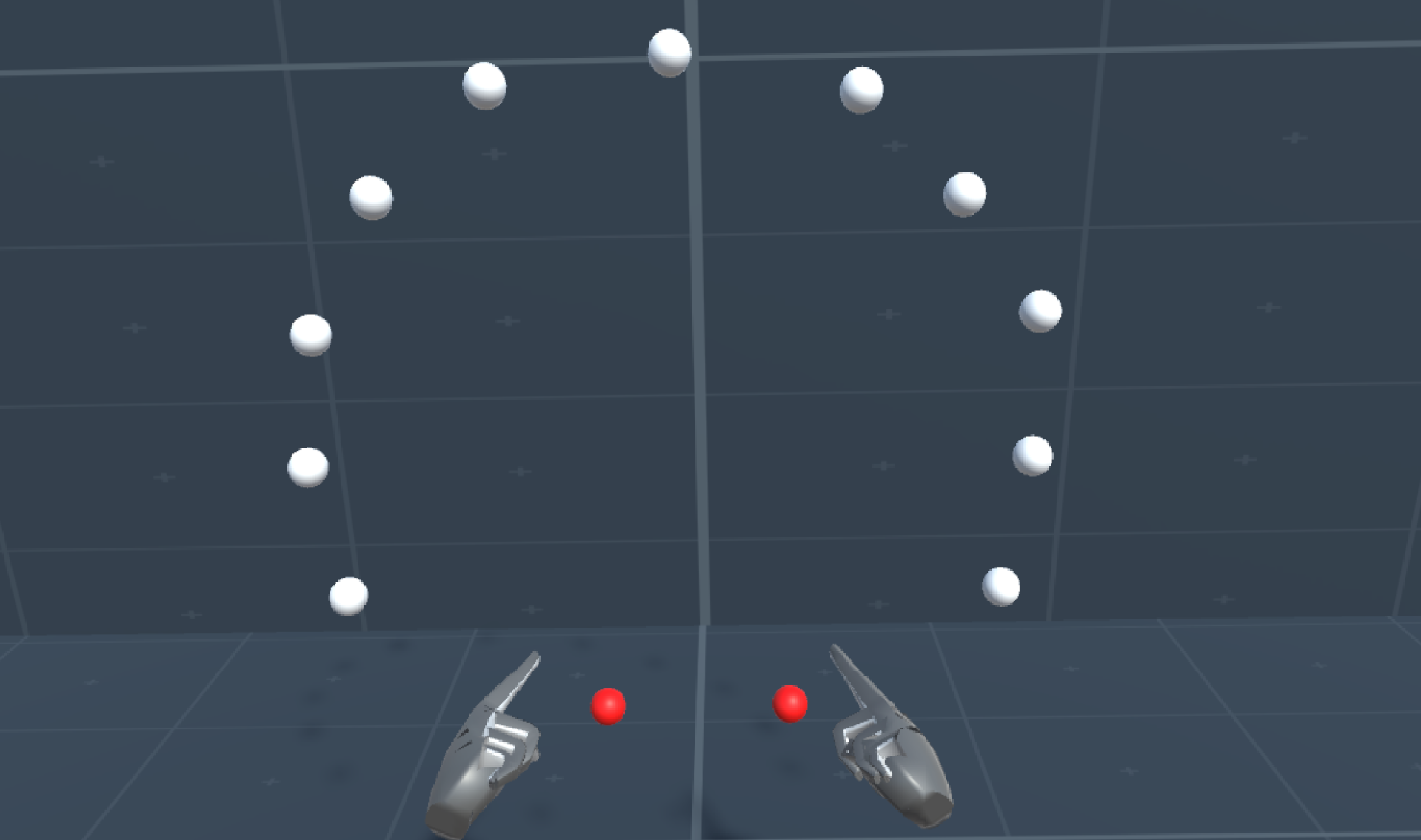 The controll setting
The controll setting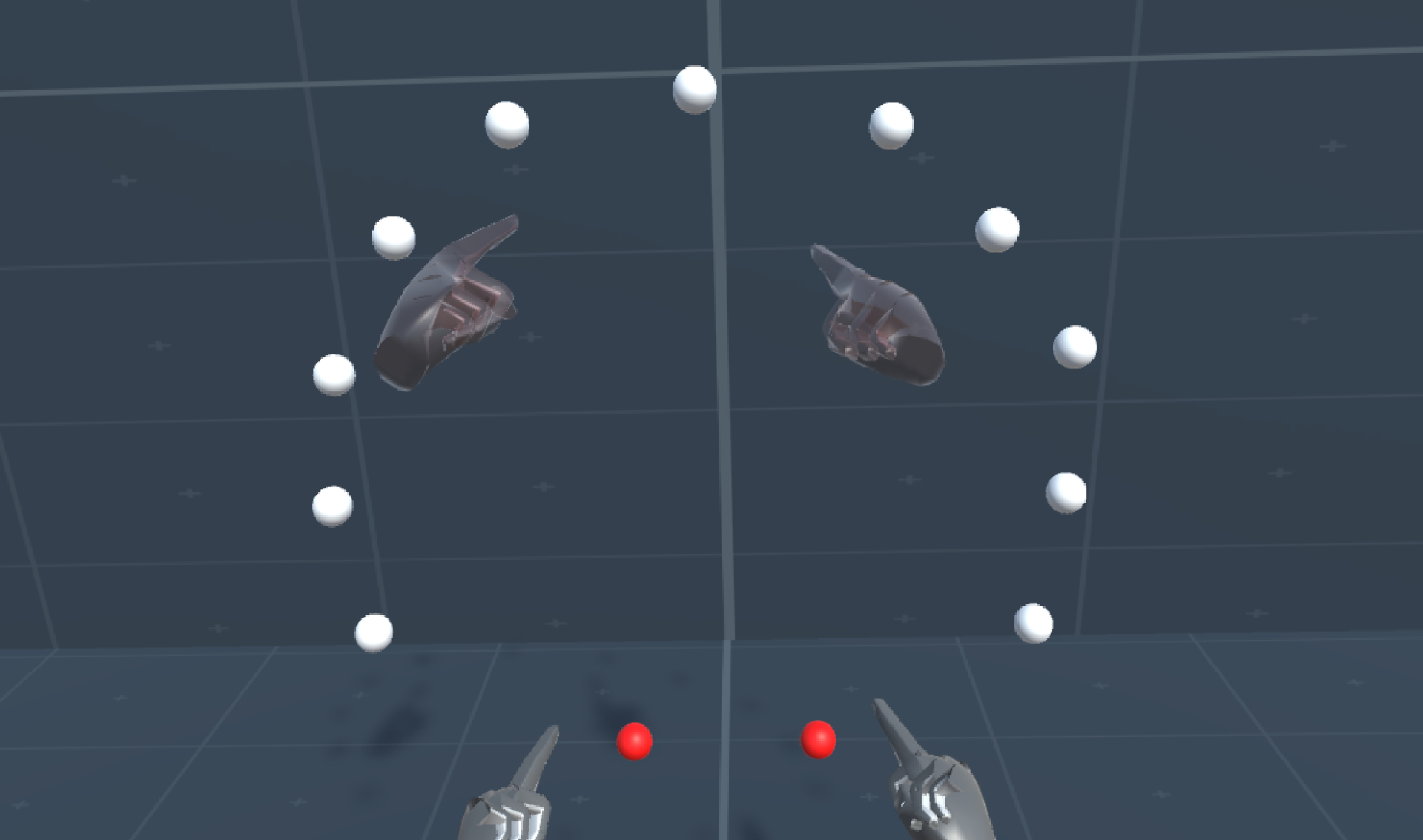 Two pairs of hands
Two pairs of hands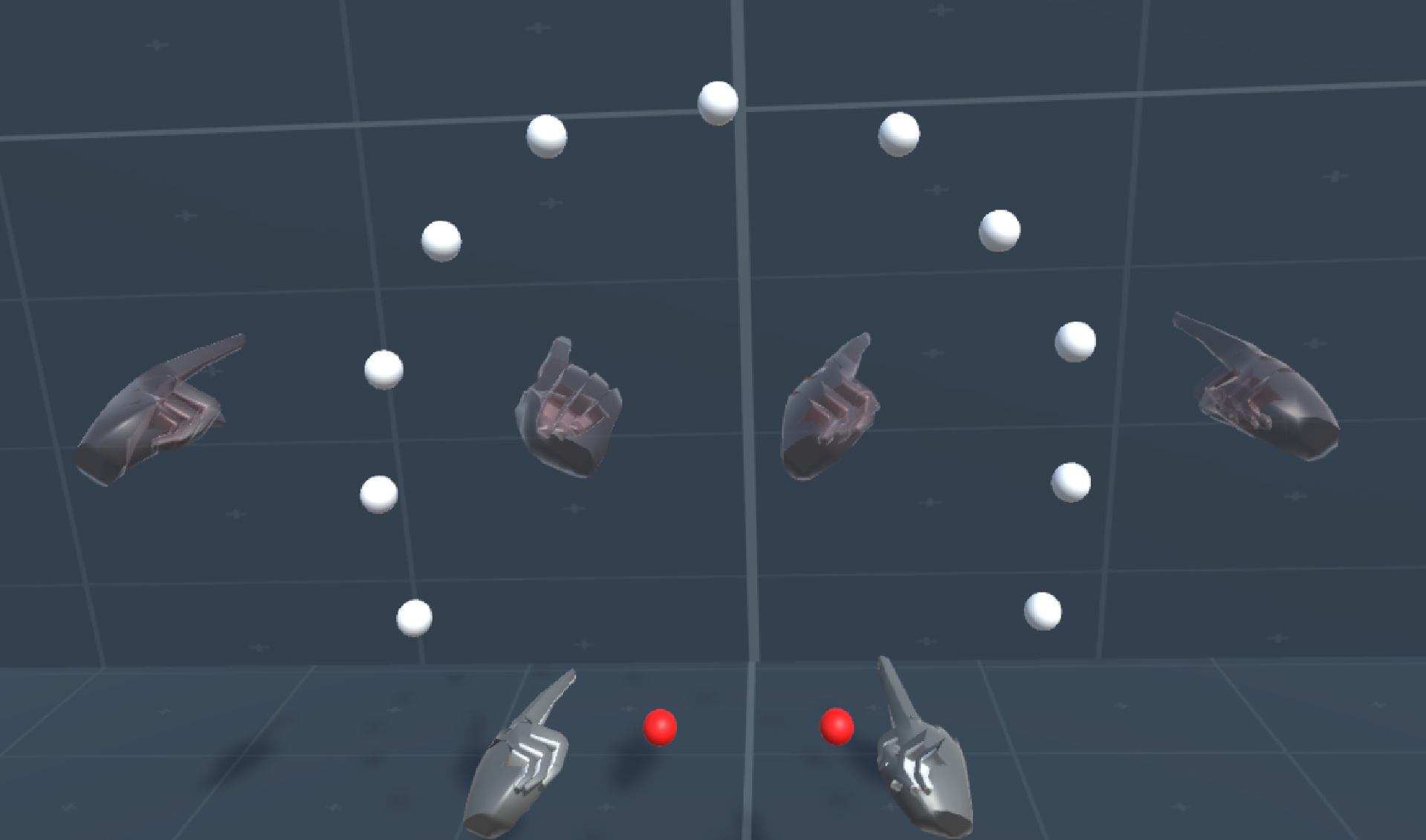 Three pairs of hands
Three pairs of hands Four pairs of hands
Four pairs of hands